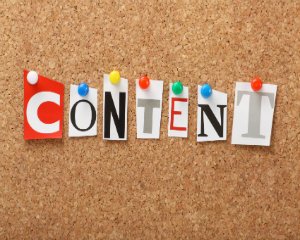Do you track your resort’s website metrics consistently? Perhaps you’re unsure how to best put the data to use to maximise your marketing efforts?
To understand which aspects of your content strategy are working, and which are falling flat, you need to look beyond the numbers. Explore what your data means and identify which parts of your property’s campaign need to be adjusted for more engagement, click-throughs and bookings.
Here are 3 ways you can use metrics to boost your content marketing campaign.
1. Decide Which Metrics Matter Most
Before you can get started, you need to have decided which metrics matter, and this means you have to have a clear idea of your resort’s social media marketing goals. Whether you want to optimise for more traffic, shares, click-throughs or email list sign-ups, Google Analytics is your go-to tool for delving into data on almost anything you want to know about your property’s website and its traffic, including those all-important social media referrals you’re interested in. You’ll find your social referral reports within the Acquisition tab on the left hand menu, and there’s the option to customise the specific types of data shown based on your resort’s marketing priorities.
Outside of Google Analytics, most of the major social platforms provide their own insights tools too.
2. Examine Your Content Strategy
Great content is at the heart of all successful social strategy. By paying attention to a few important pieces of data, you can identify the type of content that gets the best response from your guests so you can create more of it and generate even better results.
Try creating a table using your blog’s data, including information such as the post topic, time and day of posting and key performance indicators such as number of visits and number of conversions, drawn from Google Analytics. Once you’ve compiled your own content data within a clear, easy to read format like this, you can begin to look at what information you can gather from your competitors’ content campaigns. Obviously, you won’t be able to get your hands on their confidential site data, but by examining the types of content they create, and the visible response it generates from their readers in terms of comments, Likes and Shares, you may be able to identify opportunities to meet unmet needs with your audience, focus on new topics and spark new ideas.
Don’t forget to draw on your social media data to help optimise your content plan too. You can pull key performance stats on post type, engagement rates and reach from Facebook Insights – all of which should give you a clearer idea of how your content is being received by the people it’s made for.
3. Monitor Content Performance
As well as identifying what types of content are most popular, it’s important to understand the kind of content that converts most consistently, so you can produce more of it and drive more bookings.
Some key metrics to consider include:
- Conversions from your resort’s blog: When it comes to the power to convert, not all blog posts were created equal. So, what kind of posts are useful and which are not? You can find out by delving into your content conversions in Google Analytics. After setting up a goal for this kind of conversion, simply select Behaviour > Site Content, > Landing Pages to see how well specific blog posts are performing in terms of email list sign-ups and bookings.
- Conversions from social platforms: Which social channels are most useful to your marketing strategy? Take a look at your Network Referrals under the Social tab to see if Facebook, Google+, Twitter or another platform is providing you with the most traffic.
- Tracking specific shared campaigns: You can use the URL builder tool in Google Analytics to pinpoint where conversions are coming from when you’re sharing the same content and promotions on different social channels.
Online analytics tools make it easy to understand exactly where your traffic and conversions are coming from. You should make use of these tools regularly to see what is and isn’t working for you – adjust your strategy where you need to and replicate the actions that generate the best results for even more success.
What do you think? How does your resort use metrics to inform and enhance your online marketing campaign? Let us know in the comments below!
RELATED PAGES AND BLOG POSTS:
- 3 Bad Blogging Habits To Break Today
- How To Identify The Blog Topics Your Guests Want The Most
- How Long Is Too Long? Content Length Guidelines For Your Blog, Facebook & More

